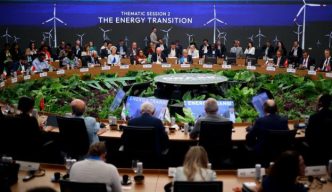As COP30 draws to a close, negotiators have rallied behind calls for a global roadmap to phase out fossil fuels, with more than 80 countries endorsing one of the strongest political signals of the summit. Yet energy specialists say the talks failed to address one of the fastest and most accessible ways to curb emissions: deploying operational AI to cut energy waste in commercial buildings.
AI has featured prominently at COP30 through side events and technical discussions, largely centred on its electricity use and the climate impact of expanding data-centre infrastructure. But experts argue that this focus overlooks AI’s immediate capacity to reduce consumption in the sectors that use the most power.
The building sector—responsible for almost 30% of global CO₂ emissions—remains among the hardest to decarbonise. According to Donatas Karčiauskas, CEO of Exergio, this is precisely where policymakers should be directing their attention.
“AI is constantly framed as a new burden. What’s interesting is that the same machine-learning methods that drive energy use in data centres can cut emissions at the point where most electricity is actually consumed, in buildings,” he said.
While governments debate how to curb the energy footprint of AI, engineers point out that the technology is already capable of lowering demand in HVAC systems, which represent the largest share of emissions from buildings.
Karčiauskas emphasises that the key lies in operational AI, which enables real-time adjustments to consumption—reducing HVAC output in unoccupied areas, shifting cooling loads to off-peak times, and factoring in external weather conditions. At scale, he argues, these cuts could offset today’s data-centre electricity demand, “turning AI from a net consumer into a net reducer of emissions.”
Exergio’s work across commercial buildings in Europe and the Middle East illustrates the effect. Large sites using operational AI typically see a 20–30% reduction in HVAC energy use, with some properties—such as major shopping centres—saving more than €1 million annually.
Despite the proven technical capability and a solid scientific basis, operational AI is still missing from most national climate policies. COP30 discussions repeatedly stressed the need to accelerate digital and financial tools, yet the sector continues to lag in adopting optimisation technologies.
“Negotiators are rightly focused on supply-side transitions such as fossil phase-out, renewables, finance,” Karčiauskas said. “But demand-side optimisation is still missing. AI can act as a digital retrofit for buildings, cutting emissions without waiting for new construction or equipment replacement.”
Experts now urge COP30 follow-up processes to formally acknowledge AI-driven optimisation as a valid decarbonisation strategy. Recommendations include embedding optimisation requirements into energy-performance standards and enabling verified software-driven savings to qualify for carbon-credit mechanisms.
“AI will continue to draw electricity, that is inevitable,” Karčiauskas added. “But it can also reduce the demand that forces grids to rely on fossil-fuel backup plants. We don’t have to choose between AI growth and climate goals. If we apply AI where emissions are actually generated, the climate will win.”







